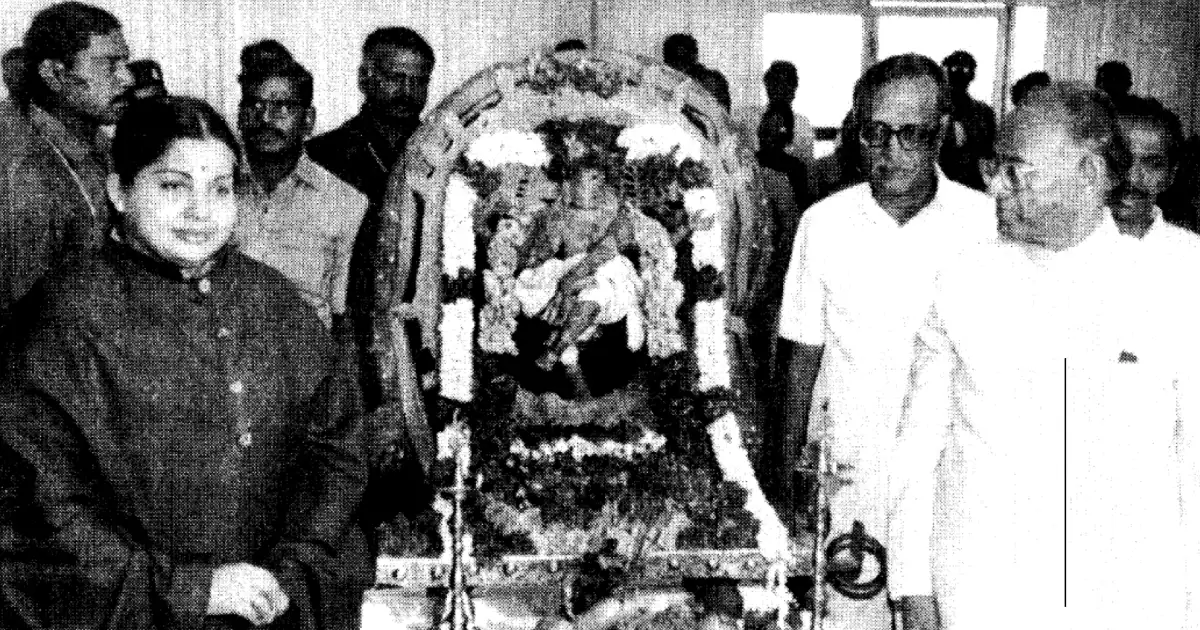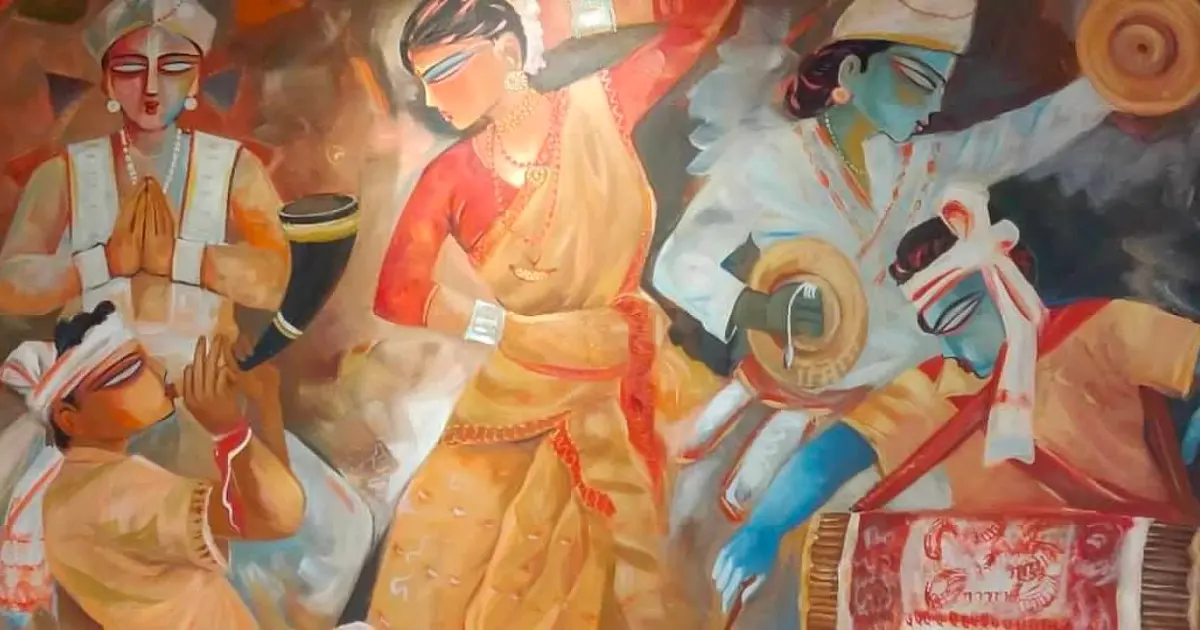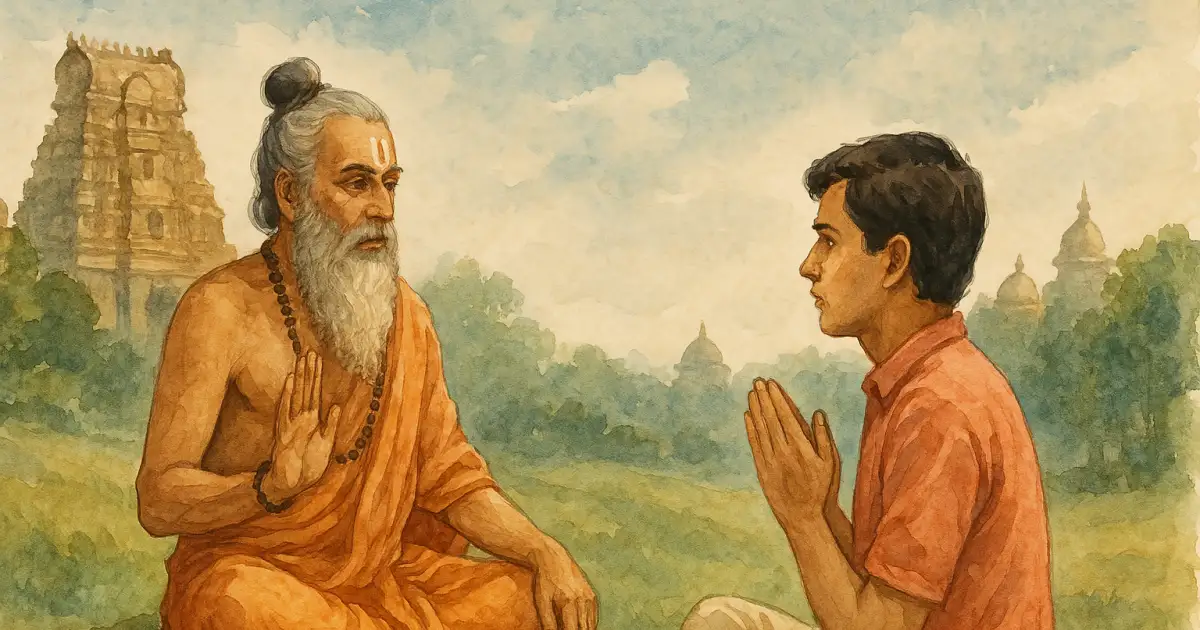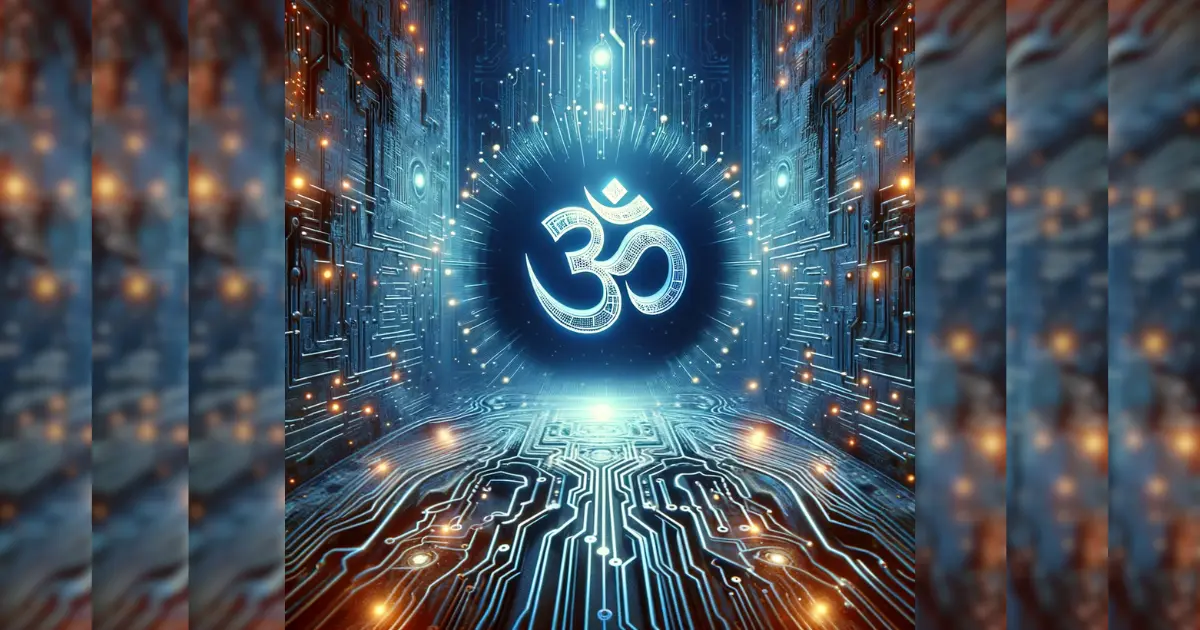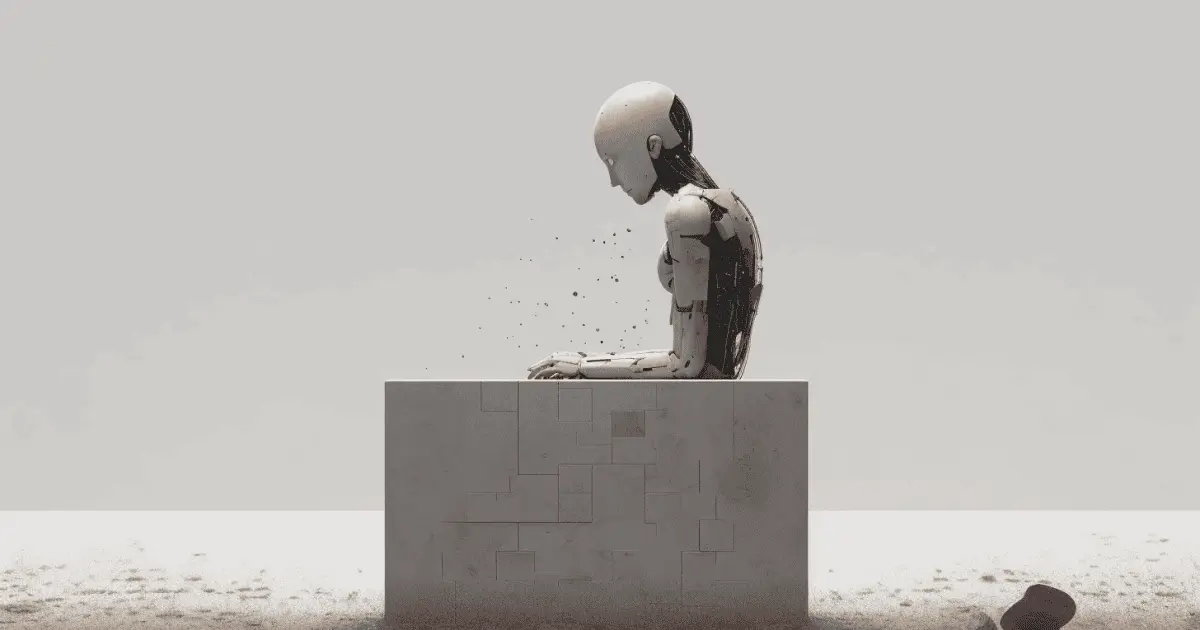This article follows the previously published article on the Restitution of Cultural Artifacts discussing the claim of modern nation states on their cultural and historical property, which is directly affronted by colonial plunder and trade in illegal antiquities. The commodifying of cultural/historical objects and their trade unequally affects third world nations rich in archeological and cultural treasures, tipping the scale in favour of the wealthy nations of the West that are the primary consumers of such antiquities. Countless antique art objects are smuggled to the West every year, but the art market network operates in a clandestine manner and the thefts are scarcely reported, let alone investigated and solved. This essay traces one such icon smuggled out of India that was restituted, its journey demonstrating the potential scale of the antiquities trade and the callous approach of Indian officials to re-institution of worship of restituted icons.
Hindu theology states that religious images are animate beings, and thus, Hindus regard the religious icons they place in temples, shrines and homes as alive. The icons of both the divine and the sacred space are consecrated, and thereafter, the physical image and the shrine are permanently infused with the presence or life-force of the deity. The image is first carved or created using strict ritual prescriptions, iconographic rules, and proportions laid out by the Śilpaśāstras. Hindu priests then breathe life into the image through a complex ritual that involves the direct invocation of the God or Goddess to come to reside in that particular material. The ritual is called prāṇa-pratiṣṭhā, meaning, the ‘installation of the life-breath’. Pratiṣṭhā rituals serve to invoke the divine presence into the material realm, and transform the physical object into a suitable medium — infusing it with life. Priests and devotees then proceed to treat the now-enlivened image as the deity itself, through continuous liturgical activity: specific rituals are prescribed for awakening, bathing, dressing, feeding, entertaining, praising, and the performance of marriage and coronation ceremonies. The deities so established have powers that extend beyond the religious realm — they act as witnesses, as sovereigns, and in modern legal frameworks, possess a distinct legal personhood.
For Śaiva adherents, bronzes of Śiva and the Śiva liṅga are considered living manifestations of the deity. The animated icon is regarded as a “localized, particularized manifestationor “incarnation of the all-pervading, transcendent God Śiva, who at his highest level of being, is considered to be beyond all form, but one who simultaneously inhabits a variety of immanent, physical “embodiments”. The Śaivāgamas (canonical texts of Śaivism) describe the process of consecration of the body of the priest and Śiva, being invoked. One of the Śaivāgamas called the Kāmikāgama lists twenty-two constituent rites that make up the ritual of pratiṣṭhā, ranging from the initial selection of materials to the final worship of the fully established, enlivened temple image.
Consecration or pratiṣṭhā is certainly an integral practice in Hindu temples. But are there limits to the ritual life of a consecrated image? What are the potential legal and religious implications of the dispossession and return of ritual objects? This essay traces a peculiarly striking case of repatriation to consider these questions: the biography of the Pathur Naṭarāja, which was stolen and smuggled out of a small temple in Tamil Nadu in 1977, sold to a collector, seized from the British Museum and tried in an English court before finally being sent home to India in 1991. The case is interesting for the representation of Śiva himself in court as a plaintiff, acting as a “juristic person” to advocate for the return of the image to India.
Our story starts in a small village called Pathur in the Kaveri delta, east of Thanjavur. At a 12th-century temple of Viśvanāthasvāmi, along with the central Śiva liṅga a bronze of Śiva in one of his most iconic forms, Naṭarāja, the Lord of Dance, was consecrated as the processional bronze (read about the iconography of Naṭarāja here).
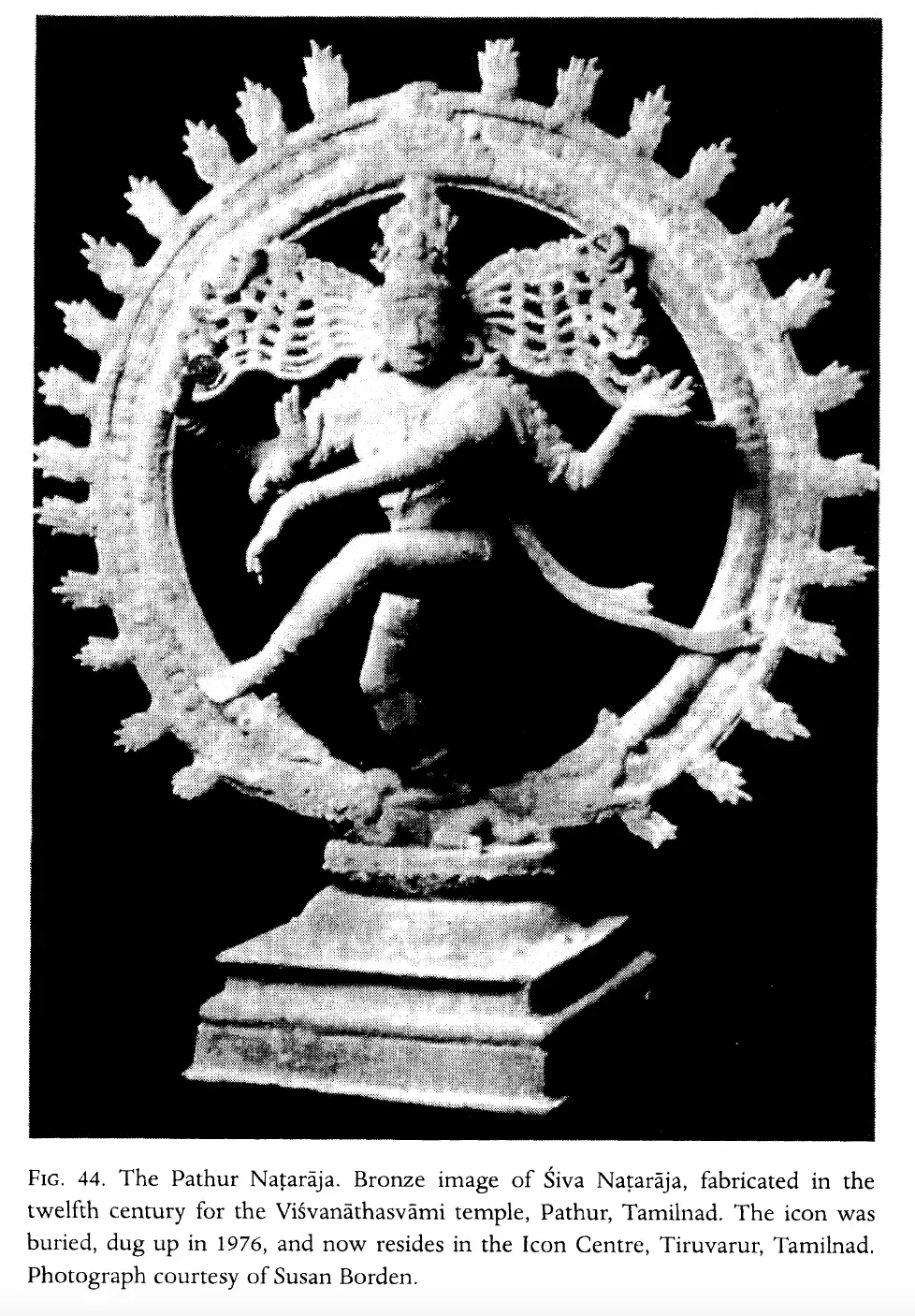
In the early 14th century, the armies of the Delhi Sultanate led by Malik Kufur, went on a rampage across the Deccan and deeper into southern India attacking temples as far as Madurai — temples were desecrated, riches were looted, idols were destroyed — save a few taken into the jungles for safekeeping by devotees. Knowing that the destruction of the major Hindu shrines and icons in the region was integral to the invaders’ agenda, even a peripheral village like Pathur would have feared invasion, and, anticipating the attack, carried out the ceremonial burial. It was relatively commonplace for temple idols to be buried ceremonially by the temple’s priests in times of threat as a common defensive strategy to protect the consecrated objects from theft or iconoclastic damage by Islamic invaders.
Officials of the Viśvanāthasvāmi temple ceremonially buried the over three-foot, 67 kilogram bronze of Naṭarāja from the sanctum along with eight other bronzes (of Śiva Somaskanda, Candeśvara, Gaṇeśa, Bhairava, the two Nayanar saints Appar and Sambandar, and two images of Pārvatī) in a large pit in the temple courtyard, carefully placing the eight bronze icons, all wrapped in cloth and covered in hay.
After the bronzes were buried, the Viśvanāthasvāmi temple also went out of worship and fell into ruins and Naṭarāja remained underground, forgotten and not worshiped for centuries. In 1976, while digging to build a cowshed on the edge of the temple ruins, a laborer named Ramamurti discovered the bronzes and made a decision that would alter his life forever. Knowing he was digging on land that belonged to the old temple, he realised that the images were ancient images of deities. Though aware that he was legally bound to inform the authorities, Ramamurti knew that objects like this were worth good money on the market, and that he could not sell them openly. He contacted his wife’s uncle Dorai, who promised to locate a buyer for the bronzes he found. With this pivotal decision, the Pathur Naṭarāja was sent on a journey from a small hamlet in Tamil Nadu to London, having been transformed from a living image of Śiva to an art object — a commodity in the eyes of the international art market. Davis writes that such conversion of an object from a cultural setting to commodity status is “often symptomatic of moments of human crisis—warfare and plunder, theft, or (as in Ramamurti’s case) economic hardship” (p.231).
Dorai first inspected the hoard himself, then returned a few days later with two other persons, Papanasam Pillai and R. Meivel, and Chandran. Chandran gave Ramamutti ₹200 for the Naṭarāja, promising more cash once the image was sold — Ramamurti never saw another rupee.
Chandran and Meivel took the Pathur Naṭarāja and returned to Trichi, where they stored it first at Chandran’s home, then at Meivel’s, and even reburied it when it was attracting too much attention. Curious to see if the image was made of gold, they broke off a piece from the prabhāmaṇḍala and a piece of the pedestal. If it were made of gold they would’ve presumably melted it to sell for raw material, but since it was pañcaloha, they decided to retain it to sell as an antique.
Pillai located a potential buyer named G. Magbool Hussain from Thanjavur, who in turn brought with him another named R. M. Balraj Nadar from Madras. Magbool Hussain was primarily a beedi merchant who dealt in antiquities as a side hustle whereas Balraj Nadar was an antiques dealer, previously charged several times with illegal trafficking in stolen antiquities, but escaped conviction.
Hussain and Balraj Nadar traveled to Trichy to inspect the Naṭarāja. Chandran initially demanded ₹3,00,000, but Hussain, noting the idol's damaged condition, offered a more practical amount of ₹10,000. Stepping outside for a brief discussion, Balraj agreed to give Hussain ₹20,000 if he could transport the idol to Madras. Hussain returned and agreed to pay Meivel and Chandran ₹10,000 for the Naṭarāja. The idol was carefully wrapped in newspaper, packed into a crate, and taken to the railway station, where it was shipped to Madras as household goods.
Once in Madras, Balraj Nadar transported the crate to Bombay by lorry, where it was sold to a dealer named Valar Prakash for ₹30,000. Following this, the trail of the Pathur Naṭarāja went cold, as Valar Prakash was never traced by the authorities. Sometime between November 1976 and June 1977, the idol made its way from Bombay to London. Despite its significant size and weight, it managed to pass through customs unnoticed.
Large numbers of antique art objects are illegally taken from India to the West every year, but their itineraries remain concealed by the clandestine art market supply network. The travels of the Pathur Naṭarāja and the motley crew of characters that were responsible only came to light due to the police investigation in Tamil Nadu and the subsequent trial in London.
In the meantime, Ramamurti, eager to make some money for his Dīpāvali expenses, sold six of the remaining idols of the Pathur horde to Hussain for ₹600. The men promised to buy him a piece of land in the village after the images were resold, however, Ramamurti never received any land. Eventually, Meivel gave Ramamurti away, escorting the police to the pit where the two images still remained buried. The police arrested Ramamurti and extracted a lengthy statement from him, due to which Hussain and his accomplices were apprehended and the six mūrtis were recovered before Hussain could pass them along. Balraj Nadar evaded the police alleging harassment, and by that time, it was too late to get hold of Valar Prakash, or to prevent the Naṭarāja from being smuggled out of the country*.*
Meanwhile in London, Julian Sherrier, an art dealer and part-time Indologist, had acquired a Cola-period Naṭarāja. He had an Oxford laboratory perform a metallurgical analysis of the bronze in July 1977, and fabricated a provenance for the mūrti. He initially quoted 1.5 million pounds for the Naṭarāja, but when in dire financial straits, ended up selling it to Robert Borden, executive officer of the Bumper Development Corporation based in Calgary, Canada for 411,111 pounds along with three other less valuable works of art.
Robert Borden had begun purchasing Asian antiquities in 1973, and over the next decade, bought forty to fifty Hindu and Buddhist objects, out of a self-professed interest for understanding cultures through art. Borden planned to lend the Naṭarāja to the National Gallery in Ottawa or another Canadian institution, but before that, the bronze needed some cleaning up. Borden entrusted the idol to Miss Enderley, a conservator at the British Museum acting in a private capacity. While the Naṭarāja was at the British Museum someone spotted it, and suspicious that it was stolen, alerted the authorities. The Indian High Commission, already on the lookout for information concerning the Pathur Naṭarāja, asked for assistance from the London Metropolitan Police, who seized the Naṭarāja from Enderley at the British Museum on 25 August 1982.
When the police seized the Naṭarāja, the Bumper Corporation issued a writ seeking renewed possession, while the Government of India then interpleaded as the plaintiff seeking the return of the Naṭarāja as it was stolen property. The case came to trial before Justice Kennedy on 17 November 1986. The two issues before the court were whether the Naṭarāja was indeed the one dug up in Pathur, and if it was, who could legitimately sue for its return? The main problem was that even if the Indian Government could prove that the London Naṭarāja had come from Pathur, it still needed to establish a claim of possession superior to that of Bumper’s. The fate of the Naṭarāja hung in the balance — it would either be displayed at a Canadian museum as a symbol of a past civilization, or be restored as a liturgical icon in its original home, the Viśvanāthasvāmi temple in Pathur, Tamilnadu.
The Indian Government resolved to aggressively pursue the Pathur Naṭarāja. The legal battle spanned forty-four court days and involved expenses far exceeding the bronze’s market value, yet the government persisted. Prime Minister Rajiv Gandhi personally assured Tamil Nadu state officials that the Central Government would cover all litigation and transportation costs to bring the idol back to India — in an effort to maintain his fragile allegiance with the regional political party ruling Tamil Nadu, the AIADMK led by M. G. Ramachandran and Jayalalitha.
The Indian government firstly relied on witness testimonies to identify the London Naṭarāja as the one from Pathur. Second, they relied on the expert testimony of R. Nagaswamy, the then Director of the Tamil Nadu Department of Archaeology, who stylistically compared it to the eight idols recovered from Pathur to prove that they formed part of a coherent group of temple icons. Nagaswamy undoubtedly had vast experience with bronzes, however, the Justice wrote of Nagaswamy’s passionately held views that being a devout Hindu, he was deeply offended at the thought that his Gods being the subject of commerce.
Once the identity of the Naṭarāja was established, it was now the question of ownership. Unable to claim ownership for itself, the central government put forward claims on behalf of various plaintiffs: the State Government of Tamil Nadu, R. Sadagopalan, executive officer of the Viśvanāthasvāmi temple, and the temple itself (a Hindu temple is an institution that acts legally as a “juristic person”). Later on, the Indian side introduced another plaintiff, the God Śiva himself, as a “juristic person,” to claim ownership of the Naṭarāja image. At the heart of the contention lies the fundamental premise of Hindu temples and image worship: that a God inhabits a consecrated physical icon and is thereby present “within” the idol, accessible to devotees. The icon is animated, living through the deity’s presence within. The living icon is considered the “owner” of the temple and its property, a fact that medieval southern Indian inscriptions stress repeatedly. Donors and devotees gift land, money, jewelry, etc. directly to the God, making Śiva the owner of all temple property.
In his ruling, Kennedy determined that Śiva, represented in the liṅga at the Viśvanāthasvāmi temple as a juristic entity, held a strong claim to the Naṭarāja, as did its custodian Sadagopalan. Additionally, the state of Tamil Nadu was found to have a rightful claim under the Treasure Trove Act and other local laws. As a result, the Bumper Corporation and Robert Borden were ordered to return the Naṭarāja to India without any compensation. Although Kennedy acknowledged that Borden had acted in good faith when purchasing the idol, the judgment also required him to cover Indian court costs amounting to over 300,000 pounds sterling.
Following the court case in London, the Pathur Naṭarāja achieved a level of fame as a contested artefact far beyond what it ever held as a consecrated deity. Upon its return, then Chief Minister of Tamil Nadu Jayalalitha announced plans for the idol’s future, pledging its return to Pathur once the temple was restored.
While Śiva is undoubtedly eternal, His earthly forms crafted to embody him are inevitably subject to the same decay and destruction that affect all material things. To address this, medieval priestly texts identified the different ways images could become unfit for worship, established criteria for assessing their recoverability, and prescribed rituals for their restoration and revivification. Medieval Śaiva texts such as Somaśambhupaddhati and Mayamata provide guidelines by which priests could go about the reanimation of damaged or abandoned icons. Going by the āgāmika texts, the Pathur Naṭarāja is certainly salvageable as an icon — any physical damage was confined to peripheral iconographic features — and ritual burial is certainly not an impediment to restoration.
Therefore, a fitting close to this story would be a glorious account of the restoration of the Viśvanāthasvāmi temple and the reconsecration of Naṭarāja. However, reality often defies narrative neatness: the life of the Pathur Naṭarāja took yet another unexpected turn, and ended up at a place called the Icon Centre in Tiruvarur, a dreary concrete enclosure established by the Government of Tamil Nadu.
In response to a spate of thefts from rural temples, the Tamil Nadu government established the Icon Centre in the 1980s as a secure repository for sacred images. Located within the outer precincts of the Tyagaraja temple in Tiruvarur, the facility consists of a heavily reinforced concrete vault with double-locked doors and round-the-clock armed surveillance. By the time the Pathur Naṭarāja arrived in 1991, the Centre housed approximately 1,000 religious icons, including other notable repatriated treasures like the Tiruvilakkuti Naṭarāja and the Sivapuram Naṭarāja, as well as bronzes from many small temples across Tamil Nadu.
While the Icon Centre provides safety from theft, it also evokes a sense of confinement. On the same day The Hindu celebrated the return of the Pathur Naṭarāja, another article in the paper quoted priests and officials from small rural temples lamenting that their deities felt imprisoned in the Icon Centre, unworshipped.
It is a poignantly ironic that, after so much effort to reclaim the Naṭarāja, and the “pious intentions” of the government officials, the famed Naṭarāja now resides in a concrete vault—protected from the predatory art market but cut off from worship and devotees, vulnerable to the stifling heat and neglect. After enduring such a tumultuous journey, the Pathur Naṭarāja surely deserves a more dignified life.
This article is a summary of the Chapter Loss and Recovery of Ritual Self, from Richard Davis’ Lives of Indian Images (1999).
References
Davis, Richard H.. Lives of Indian Images. India: Princeton University Press, 1999.
